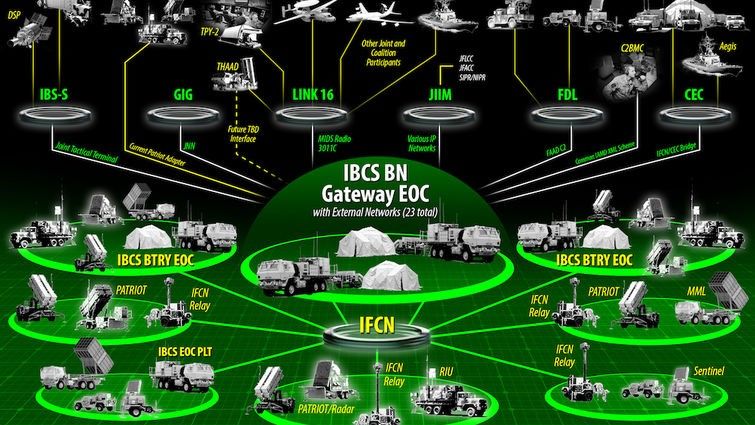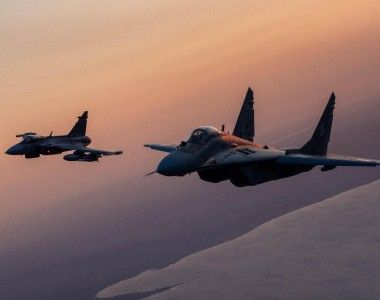How Much is Poland Going to Pay for the Patriot System?

What is the price Poland is going to pay for the first phase of the Wisła programme, within which the Patriot system is expected to be acquired? The Polish Ministry of Defence did not mention any specific amounts. However, the former head of the MoD, Antoni Macierewicz, claimed that the price would come with a discount of 50%, in comparison with the State Department’s notification for congress – at a level of around 5.25 billion dollars. RMF FM radio released information on Thursday, mentioning an amount of USD 4.5 billion. One of our sources claims that the latter information is untrue, while the ultimate price would be “a bit higher”.
The former head of the Polish MoD posted the following via Twitter: “This is a major success for Poland: the #MoD confirms the fact that Patriot missiles would be bought for 1/2 of the price mentioned by the US Congress, in line with the information provided by me to the leadership on 6th January 2018. I would like to congratulate the negotiators, Col. Marciniak, @KownackiBartosz, and the #PGZ management on that. Mission accomplished.”
Previously, RMF FM had been claiming that Phase I of the Wisła programme could cost up to USD 4.5 billion. A source close to the matter we have managed to reach emphasized the fact that the latter amount is untrue. “The price is going to be a bit higher” – states our informant.
On Wednesday, the current head of the MoD, Mariusz Błaszczak, was mentioning the Wisła programme negotiation success via Twitter. He noted that a lower price has been achieved, with simultaneous acceleration of the deliveries, without any side impact on the system’s combat capabilities.
Last week a party of Polish delegates paid a visit to DC, in order to arrange the conditions of the agreement which would be signed with the US Government as a part of the FMS programme - as Defence24.pl found out. Poland is willing to procure the Raytheon’s Patriot solution as a part of its Wisła air/missile defence programme. The said system would be coupled with the Northrop Grumman’s IBCS command system.
Line-by-line review procedure has also come to an end, which means that the intergovernmental agreement’s terms and conditions are now properly arranged. Defence24.pl’s unofficial sources suggest that no hampering of the combat capabilities of the Wisła system would occur, in relation to the notification issued by the Department of State for the US Congress at the end of 2017. This concerns both the IBCS solution, as well as the latest PAC-3 MSE missiles, 208 of which are listed within the release (plus 11 for testing purposes).
The delivery process is also going to be accelerated, when compared to the original Polish schedule, with the first battery arriving before the end of 2022, and the second one following in 2024.
In Mid-November 2017 the US State Department issued a consent, regarding procurement of four Patriot fire units integrated with the IBCS system and adopted to be plugged into the IAMD architecture. The package includes: 16 launchers, 208 PAC-3 MSE effectors, with 11 to be used for testing, as well as IBCS suite elements, including 14 Engagement Operation Centres, adaptation packages for launchers and radars and IFCN comms suite elements.
Following the issuance of draft LOA, talks began. The negotiation took on a form of a “line-by-line review”, referring to the individual provisions contained within the agreement.
In mid-January “Dziennik Gazeta Prawna” announced that Poland received a new offer, with a value of less than 7 billion dollars. However, this was not the final proposal, with the “line by line review” in progress. On 22nd January delegates if the Armament Inspectorate of the Polish MoD were sent to the US.
Poland is the first country that has been authorized to acquire the IBCS system. This is happening as a part of the “yockey waiver” procedure, allowing the country to access armament that is not being series manufactured now, which usually delimits the available scope of FMS procurement.
Wisła programme has been divided into two stages. The currently negotiated intergovernmental contract concerns procurement of two batteries (four fire units) and certain elements of the comprehensive medium range air defence solution. This includes an inventory of PAC-3 MSE missiles for both phases of the programme, along with the IBCS solution.
Poland is willing to procure batteries with a 360-degrees scan radar and a new interceptor at the second stage. SkyCeptor, most probably, is the said new effector. The scope of the Phase II is yet to be defined, as decision pertaining to the radar is, to a great degree, dependent on the selection of the prospective US Army sensor for the LTAMDS programme.
It may be assumed with a high degree of probability that Poland will be pushing towards acquiring a compatible solution, to avoid any cost that may be entailed by procurement of a unique radar. Several bidders have been involved in the LTAMDS programme, including: Lockheed Martin and Northrop Grumman (rotating antenna array radars) and Raytheon (Patriot radar that underwent an in-depth modernization). Defense News claims that Technovative Applications would be tasked with reducing the risks associated with the new sensor. What is certain though is the fact that the new radar would offer 360 degrees coverage, utilizing GaN array. Furthermore the sensor should be able to be coupled directly with the IBCS command suite.
On the other hand, before SkyCeptor is offered to Poland, certain steps need to be taken with regards to integration of this effector. Hence we cannot be sure as to whether the aforesaid missile derived from the Israeli Stunner solution and developed jointly by Raytheon and Rafael would be used within the framework of the Wisła programme. Following the finalization of Phase II, Poland is expecting to have 8 batteries in its inventory. The cost of Phase II is dependent on a variety of factors, including the price of the interceptor that would be a cheaper measure complementary to the PAC-3 MSE effectors acquired throughout stage I. Another issue that shall be taken into equation is the expenditure related to the 360-degree coverage radar. Considering the LTAMDS programme and the necessity to integrate the SkyCeptor missile, it is not probable that the second phase of the Wisła procurement could become a subject to an agreement this year.
Rafał Lesiecki, Jakub Palowski



